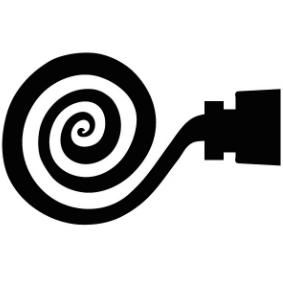Navajo Indian Life (1956)
Opening titles over two Navajo/Diné men on horseback and a wagon train of two horse (łį́į́ʼ) and carriages riding down a dirt road across desert landscape: “Cultural Heritage Series — Navajo Indian Life; Produced by Walter P. Lewisohn in cooperation with The National Council of American Indians; Distributed by Coronet Films; Commentary written and narrated by Carl Carmer”; camera traces a rainbow touching down on an open desert landscape, sun shade in foreground; person in far distance on horseback shepherding sheep in Monument Valley/Tsé Biiʼ Ndzisgaii; different views of the herd walking and drinking from water hole; close shot of a Navajo boy on a donkey looking at the camera; shots of the sheep eating vegetation; a Navajo woman and small boy riding a donkey over wet desert, sheep and a dog nearby; a woman shooing sheep past a canyon wall; back to the woman and boy on the donkey riding behind sheep next to a water hole; camera pans across an illustration of a Navajo homestead; a corral made of branches; medium shot from behind of an elder Navajo woman weaving at a loom; another shot from behind as she walks between a branch-framed door, followed by three little boys (one scooting along the ground on his buttocks), another younger woman carrying a baby, and a little girl; wide shot of the sun shade (Chaha’oh) they’ve exited and Monument Valley beyond; another shot from inside of the younger woman exiting and back to the group shot as the elder sets a cast iron pot on a fire pit; back to the shot of the elder at her loom; man driving a horse and wagon carrying a barrel; the small boy with a disability scoots out of the sun shade to a white enamel pan; the younger woman carrying a toddler boy and a bucket walks up to the man with the wagon as he places one end of a hose in the barrel and he sucking on the other end to get the flow going; close up of the man sucking and pouring water into the bucket — camera pans up to the woman and child; close up of the scooting boy’s face to reveal he may have a disease disfiguring him; two women exit a hogan, one carrying a toddler boy; the younger woman from before entering the sun shade smiling; the small boy with a disability picking up the pan and scooting back into the sun shade; a hungry-looking dog (łééchąą’í) walking around; the elder woman walking with some difficulty inside the sun shade; a dry canal leading up to an irrigation pivot/filter (shot through a barbed wire fence); a few corn (naadą́ą́ʼ) plants in a field, far apart; one-story buildings with a smokestack (Kayenta Sanatorium), hills behind; close up of an abandoned pile of file folders marked “Clinical Record Cover” in disarray; close up of patient’s completed form [first name illegible, family name Cody]; a closer shot, masking the first name, showing the patient’s age as 18, the word “pagan”, etc.; a room full of files in disarray; a wall and rafters full of hanging beaded necklaces, earrings and other jewelry; a medium shot of a man on horseback motioning to move forward; he and the other man from earlier and the horse and carriages they ride in front of cross the desert; shots of boys shepherding sheep, and then following along behind the carriages; the two men ride past the camera; a woman and boy walk by the camera; closer shot of the two riders; close up of sheep passing by the camera; the two riders with a butte in background; close shot of water whirling next to a rocky embankment; wide shot and pan of a section of what is identified by the narrator as “Bluewater” (Creek?); small truck laden with a huge load of carrots that stick straight out; various shots of a field of — presumably all — Navajo men, women and children in a field picking and bundling carrots, including shots of individuals; a truck driving past the field as men ride, throw and stack, carrot bundles onto its bed; back to the workers in the field; camera pans past a group of log cabins and sun shades surrounding a central square and fire pit — laundry hanging off a long line crossing the square; wind and dust whipping over the cabins; a woman gathering her clothes off the line amidst the sandy wind; she carries her pile into the cabin; a woman chopping wood in a field as seen behind fence and barbed wire in foreground; a pile of wood and kindling; shots of the cabins with desert landscape and train going by in the distance; the two men on horseback and horse and carriages cross the desert and approach large sand dunes; closing titles: “Cultural Heritage Series, The End.”
This film does not yet appear to relate to another film in our collection of the same name from 1939: https://tribesourcingfilm.org/digital-heritage/navajo-indian-life-1939.



